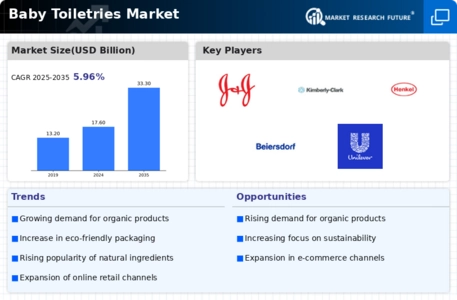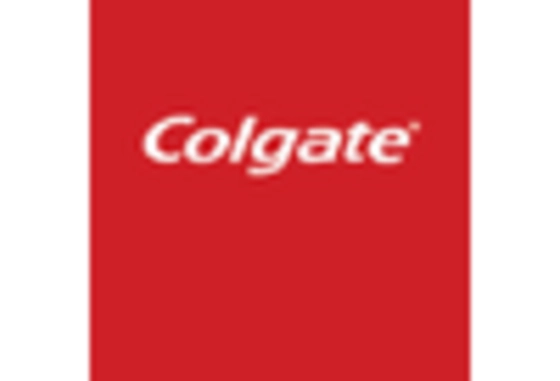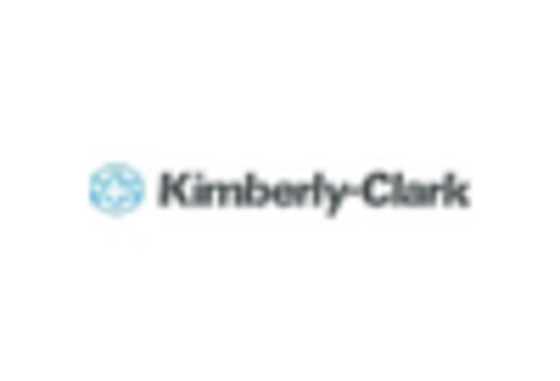Rising Disposable Income
The increase in disposable income among families is another critical driver of the Baby Toiletries Market. As economic conditions improve, parents are more willing to invest in premium baby care products. This trend is particularly evident in emerging markets, where a growing middle class is seeking high-quality toiletries for their infants. The Baby Toiletries Market is experiencing a shift towards premiumization, with consumers opting for products that offer enhanced features, such as organic ingredients and eco-friendly packaging. Market data suggests that the premium segment is expanding rapidly, indicating that parents are willing to pay more for perceived quality and safety. This willingness to spend reflects a broader trend of prioritizing child care and wellness, further fueling the growth of the industry.
Expansion of Retail Channels
The expansion of retail channels, particularly in e-commerce, is a vital driver of the Baby Toiletries Market. The convenience of online shopping has transformed how parents purchase baby care products. E-commerce platforms provide a wide range of options, allowing consumers to compare products and prices easily. This shift has led to increased accessibility for various brands, including niche and organic products that may not be available in traditional retail stores. The Baby Toiletries Market is benefiting from this trend, as online sales continue to grow, accounting for a significant portion of total sales. Retailers are also enhancing their online offerings, which further supports the industry's expansion. As more parents turn to online shopping for convenience, the market is likely to continue evolving in response to these changing consumer habits.
Increasing Awareness of Baby Skin Care
The rising awareness among parents regarding the importance of baby skin care is a notable driver in the Baby Toiletries Market. Parents are increasingly informed about the potential effects of harsh chemicals on their infants' delicate skin. This awareness has led to a growing demand for products that are gentle, hypoallergenic, and free from harmful substances. As a result, brands are reformulating their products to meet these expectations, which has contributed to a shift towards organic and natural ingredients. The Baby Toiletries Market is witnessing a surge in sales of products that emphasize safety and skin health, with a reported increase in the market share of organic baby toiletries. This trend indicates a significant change in consumer preferences, as parents prioritize the well-being of their children.
Growing Demand for Eco-friendly Products
The increasing concern for environmental sustainability is driving the demand for eco-friendly products within the Baby Toiletries Market. Parents are becoming more conscious of the environmental impact of their purchases, leading to a preference for biodegradable packaging and natural ingredients. This trend is prompting manufacturers to innovate and develop products that align with eco-friendly values. The Baby Toiletries Market is witnessing a rise in brands that promote sustainability, which resonates with environmentally aware consumers. Market data indicates that eco-friendly baby toiletries are gaining traction, with a notable increase in sales attributed to this shift in consumer behavior. As sustainability becomes a priority for many families, the industry is likely to see continued growth in this segment.
Influence of Social Media and Online Reviews
The impact of social media and online reviews on consumer purchasing decisions is a significant driver in the Baby Toiletries Market. Parents increasingly rely on digital platforms to gather information about baby care products. Influencers and parenting blogs play a crucial role in shaping perceptions and guiding choices. Positive reviews and recommendations can lead to increased sales, while negative feedback can deter potential buyers. The Baby Toiletries Market is adapting to this trend by enhancing their online presence and engaging with consumers through social media channels. Brands are investing in digital marketing strategies to build trust and credibility, which is essential in a market where parents seek reassurance about product safety and efficacy. This shift towards digital engagement is likely to continue influencing purchasing behavior in the industry.


















Leave a Comment